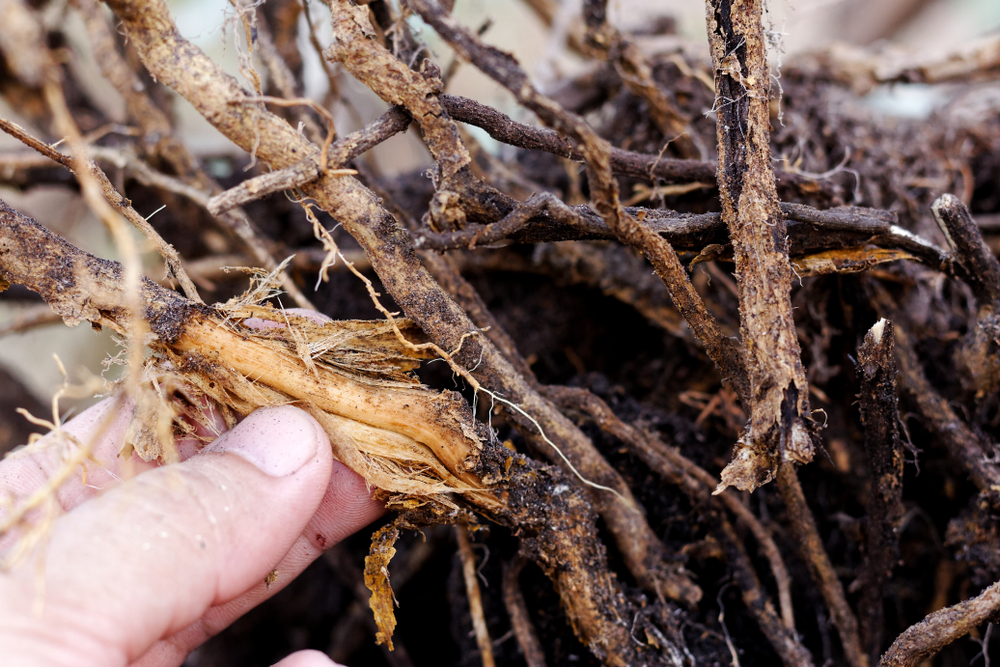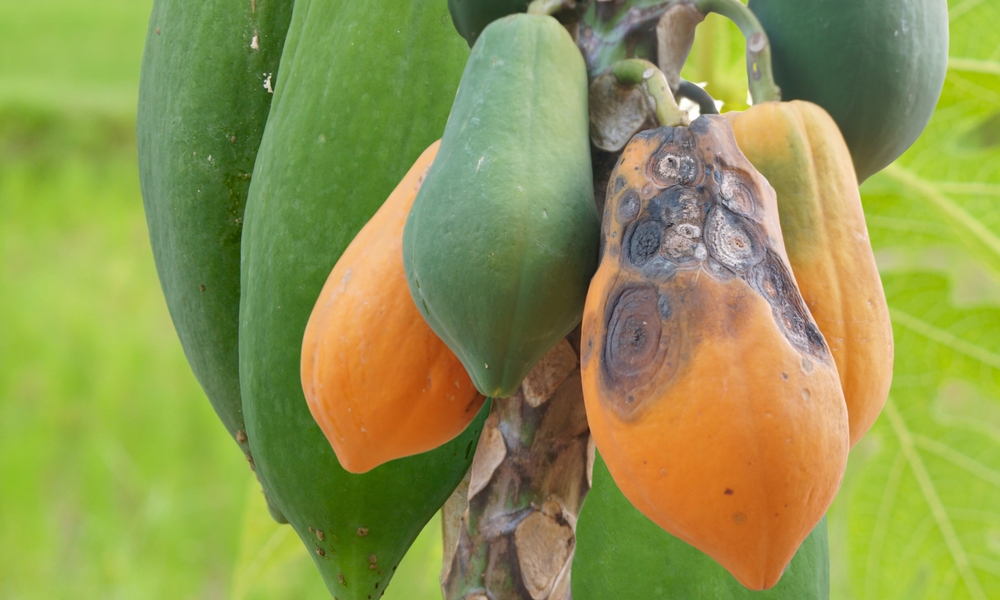Winter in Queensland might be mild, but for your garden trees, it can be a season of serious risk. Cooler temperatures and increased moisture create ideal conditions for several destructive tree diseases that quietly spread through beloved local species. Experts at Lance's Tree Care understand how quickly these issues can develop if left unchecked. In this guide, we uncover the top five winter tree diseases affecting gardens.
We’ll share steps you can take to spot early symptoms, limit the spread, and protect your garden's health through the colder months. Let’s get started!
Myrtle rust is a fungal disease that poses a threat to Myrtaceae species, a plant family that includes some of Australia's most iconic flora, such as eucalyptus, lilly pilly, and bottlebrush. This pathogen, caused by the fungus Austropuccinia psidii, primarily targets new growth, which is critical for the vitality and reproduction of these plants. Myrtle rust was first detected in Australia in 2010 and has since spread rapidly, affecting cultivated and wild Myrtaceae plants.
Recognising the symptoms of Myrtle Rust early is key to protecting your trees from long-term damage. This fungal disease often starts subtly but can quickly spread if left untreated. By understanding what to look for, you’ll be better equipped to take action before the infection takes hold.
One identifiable symptom of this tree disease is the presence of bright yellow to orange spores on the plant's surfaces. These spores are often found on the underside of young leaves, shoots, and buds, and can be easily spread by wind, animals, and human activity. The vibrant colouration of the spores makes them noticeable against the green of healthy foliage.
As the infection progresses, affected plants may exhibit deformed leaves. These leaves can appear twisted, curled, or blistered. The deformation is a result of the fungus disrupting the normal growth patterns of the plant, leading to compromised photosynthesis and overall health.
Another sign of Myrtle Rust is the dieback of young shoots. Infections that reach young shoots often cause them to wither and die, disrupting the plant’s ability to regenerate.
While Myrtle Rust can strike at any time of year, Queensland’s winter conditions often create the perfect storm for its spread. Damp winter microclimates weaken plant defences and give fungal spores an ideal foothold.
If you’ve spotted signs in your garden, you should act quickly and carefully. Proper management can help contain the disease and protect nearby plants from infection. Below are some steps you can take to respond effectively and minimise its impact.
The first step in managing Myrtle Rust is to promptly remove and dispose of any affected parts of the plant. Be sure to remove infected leaves, shoots, and buds completely. It is crucial to bag these materials immediately and dispose of them responsibly, as leaving them on the ground can contribute to the further spread of the spores.
Preventing the spread of myrtle rust also involves modifying your watering practices. Avoid overhead watering, which can create the damp conditions that the fungus favours. Instead, water the base of the plant to keep foliage dry and reduce the likelihood of infection.
For a comprehensive and effective approach to managing myrtle rust, consulting a professional arborist is highly recommended. They can provide expert advice on treatment options, which may include the application of fungicides or other control measures. They can also assess the extent of the infection and offer guidance on long-term management strategies to protect your Myrtaceae plants from future outbreaks.

Brown Root Rot, caused by the fungus Phellinus noxius, is a particularly insidious threat to trees in gardens. This soil-borne fungus primarily attacks the roots of trees, undermining their structural integrity and often leading to fatal outcomes. Brown Root Rot is notorious for its capacity to spread through root-to-root contact, making it a formidable adversary in any garden or natural setting.
Symptoms typically begin subtly, making early detection difficult without close observation. Look for general signs of stress in otherwise healthy trees:
As the infection progresses and root damage worsens, more serious symptoms start to appear:
Winter poses unique challenges for trees, even in the relatively mild climate. Winter’s lower light and cooler weather compound stress in trees, leaving them more vulnerable to soil-borne pathogens. The fungus thrives in conditions where trees are compromised, allowing it to spread more aggressively. As such, winter becomes a critical time for vigilance and proactive management to protect trees from this devastating disease.
Addressing Brown Root Rot requires a multi-faceted approach. First and foremost, improving drainage around the affected trees is crucial. Excess moisture can create an environment conducive to fungal growth, so ensuring that water does not pool around tree roots is an essential preventive measure. Also, avoiding wounding the roots is another key strategy. Roots can be damaged through construction, landscaping activities, or even routine garden maintenance. Such injuries can provide an entry point for the fungus, facilitating infection. Exercising care during any activity that involves the soil around trees can help mitigate this risk.
Despite these preventive measures, Brown Root Rot can be aggressive, and professional diagnosis and intervention may be necessary. Engaging with a tree care specialist who can accurately diagnose the extent of the infection is vital. In some cases, removal of the affected tree may be the only viable solution to prevent the spread of the fungus to nearby trees. A professional arborist can also provide guidance on selecting resistant tree species for future plantings, helping to safeguard the garden's health in the long term.
Cypress Canker is a fungal disease affecting conifer species, with the Leyland cypress being particularly susceptible. This is caused by several species of the fungus Seiridium, which penetrate the tree’s bark and disrupt its vascular system, leading to extensive damage. This pathogen is notorious for its rapid spread and ability to cause harm if not managed promptly and effectively.
Early identification of this issue is crucial for effective management. The first signs of infection are often subtle, making it essential to regularly inspect your trees, especially during winter when the disease is more likely to spread. Key symptoms to watch for include:
Winter presents a unique set of challenges for trees, and Cypress Canker exploits these vulnerabilities. The disease often enters through wounds, which are more common during winter due to a few factors:
Managing Cypress Canker requires a proactive approach to prevention and treatment. Here are some strategies to help protect your trees:

Anthracnose is a common group of fungal diseases that primarily affect deciduous trees, though some evergreens can also be susceptible. These fungi are notorious for their ability to attack a wide variety of trees, including sycamores, oaks, maples, and even some fruit trees. The fungi responsible for anthracnose are host-specific, meaning the species that attack one type of tree won't necessarily infect another. Despite this, the damage they cause can be extensive and unsightly, making it a concern for gardeners aiming to maintain the health and aesthetic appeal of their landscapes.
Anthracnose usually targets leaves, stems, flowers, and fruits, with symptoms varying slightly between host plants. Here’s what to look for:
As the infection spreads, affected plant parts may begin to rot or dry out completely, leading to:
The fungus behind Anthracnose is well adapted to surviving winter in Australian gardens. Even when trees appear dormant or less active, the disease continues to develop and prepare for re-infection in spring.
Managing anthracnose requires a combination of sanitation and, if necessary, chemical intervention. Here are some steps to consider:
Phytophthora Root Rot is caused by various species of the water mould genus Phytophthora. This pathogen thrives in damp conditions, leading to root and collar rot in a variety of tree species found in Queensland gardens. While it may sound like a fungal infection, Phytophthora is technically classified as an oomycete, a group of organisms that require water to spread and infect plants.
Detecting this issue early is crucial for managing its spread and minimising damage. Here are the symptoms to watch for:
Phytophthora Root Rot becomes problematic during the winter months due to specific environmental conditions.
Managing this disease involves a combination of prevention and intervention strategies. Here’s how you can protect your trees:
In conclusion, winter is when hidden threats come alive. Diseases like Myrtle Rust, Brown Root Rot, and Anthracnose thrive in the cool, damp conditions, quietly weakening even the healthiest trees. Spotting symptoms early and taking swift action can make all the difference. Don’t let winter catch your garden off guard—stay proactive and protect your trees before problems take root.